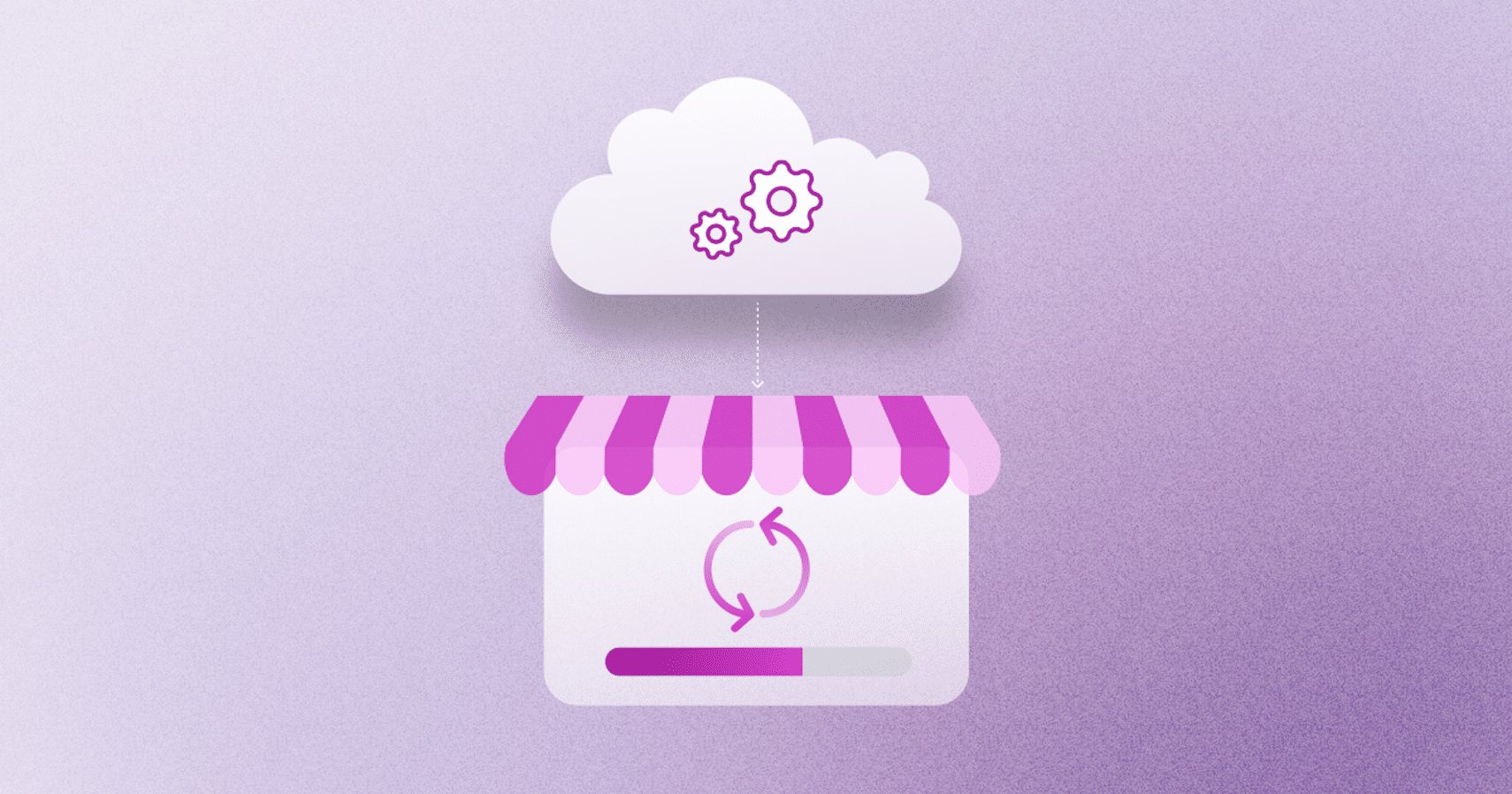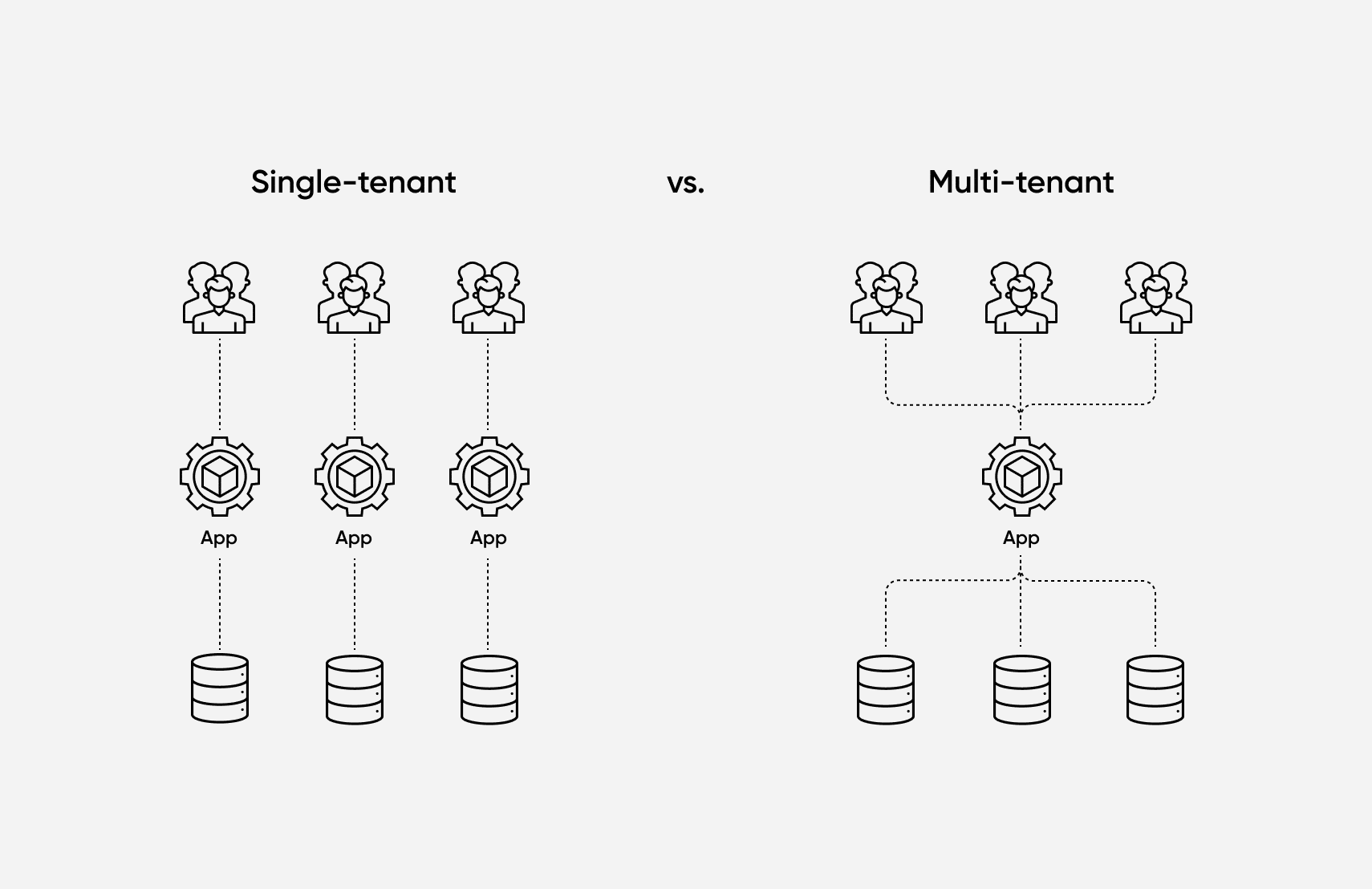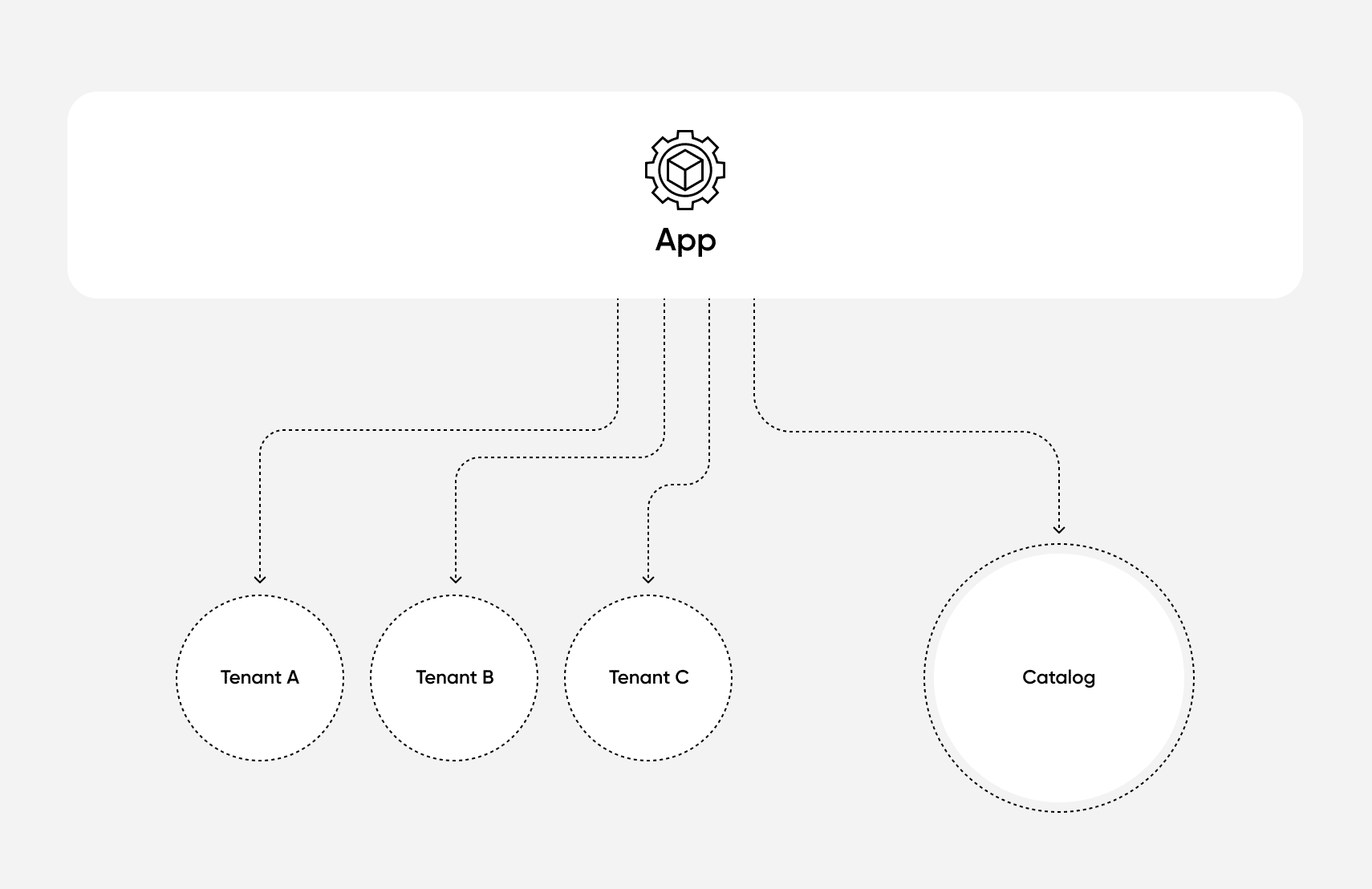How Multitenant Architecture Is Disrupting Modern Order Management

Lower costs, greater flexibility, and improved efficiency are just some of the ways multitenancy is transforming traditional order management. Here’s why mid-market and enterprise brands and retailers are abandoning their legacy software and making the critical switch to state-of-the-art multitenant SaaS applications today.
Across all types of engineering disciplines, there is one fact that is abundantly clear: the design and the construction of a solid foundation have a profound effect on the quality of what is built on top of it. To stay ahead of the curve, e-commerce engineers must continuously evaluate software architecture to lay the best groundwork for resilient, high-performing, secure, and cost-optimized IT operations.
While legacy monolithic applications present many challenges for SaaS customers, modern applications offer their SaaS customers a consistent experience and a common, extensible set of modular interfaces. At fabric, our goal is to develop highly scalable, flexible, stable, secure, and reusable commerce infrastructure to support the future of trade. This includes our market-leading order management system (OMS) software, as well as our other core products and APIs.
However, customers recognize that software is only ever as good as the foundation it’s built on. Therefore, it comes as no surprise that the mid- and enterprise markets have naturally embraced cloud computing and multitenant software-as-a-service (SaaS) applications in recent years.
[toc-embed headline=”Multitenancy is Fundamental to SaaS”]
Multitenancy is Fundamental to SaaS
“At the core of SaaS is multi-tenancy; multi-tenancy gives customers (i.e. tenants) and providers vast opportunities to leverage the power of cloud infrastructure by consolidating operational entities. The drive toward multi-tenancy in SaaS applications is a result of the economic benefit derived by shared development and maintenance cost.”
– Abdul et al., International Journal of Digital Society (IJDS), Volume 9, Issue 1, March 2018
Multitenancy is a software architecture where a single software instance can serve multiple clients or organizations. A simple analogy is an apartment building that houses multiple tenants, where the building provides resources (such as electricity through distribution lines from a power generation plant) and these are shared amongst all of the building’s occupants. Each tenant can decide how much or how little of the resources they want to use, and the building will meter and bill each occupant based on their usage.
On the flipside, there’s single tenancy architecture. Instead of a shared apartment building, the street is lined with individual houses and each house has its own generator to produce electricity. Of course, buying and maintaining a generator means you don’t have to share resources, but it’s also a lot more expensive and cumbersome than just paying for the amount of electricity you use.
The debate over which architecture is superior has been going on for over a decade. One of the key sticking points is that multitenancy lowers costs and offers a wide array of benefits to SaaS vendors, but doesn’t exactly benefit customers directly. As one author put it, “multi-tenancy promises to age gracelessly as this market matures.”
However, the argument for single tenancy SaaS applications has aged like milk over time.
Phil Wainewright, an expert in cloud computing, explained it best when he said that multitenancy is the ideal architecture to make the most of the cloud environment because it continually evolves to keep pace with the collective demands of its tenants. A multitenant application runs on a shared platform that is constantly being fine-tuned to succeed better at interactions with customers, suppliers, partners, and employees.
And yet, for all of its powerful features and benefits, multitenant architecture remains elusive in the rapidly-progressing field of order management.
[toc-embed headline=”The Missing Piece in Order Lifecycle Management”]
The Missing Piece in Order Lifecycle Management
It’s impossible to ignore the impact of multitenancy on software services. Customers can share development and maintenance costs as well as the hardware infrastructure of cloud servers. Meanwhile, upgrades to the computing environment (software, hardware, and database) can all be managed by the independent software vendor (ISV), which frees up time and monetary resources for customers.
However, the same can’t be said for order management software for retail businesses. The market is currently dominated by legacy product offerings that often rely on single tenant software architecture. As a result, customers that use legacy OMS software are paying a hefty price.
For example, while multitenant applications tend to be purpose-built for configurability, single-tenant order management systems tend to require expensive and resource-intensive custom code to accommodate incremental changes, which can quickly add up.
Meanwhile, a single instance of OMS software with custom code may sound enticing to prospective buyers considering building with open-source software projects. But over time, the lack of scalability largely offsets the potential benefits. In fact, top vendors that offer robust feature sets will charge nosebleed prices for even the simplest upgrades and enhancements, making some applications prohibitively complex and expensive to use.
Furthermore, in outdated SaaS models that are not sustainable, vendors require additional fees to make implementation changes. This reduces time to market and return on investment for software customers, as opposed to modern SaaS models where configurability in the product without the need to write code is a key feature.
In a world where companies like Tesla and Apple use multitenancy to push over-the-air software updates to all of their customers, and where offerings like Salesforce Commerce Cloud, Google Workspace, Office 365, Spotify, Slack, Steam, and other services are all multitenant, it no longer makes sense for companies to continue using expensive legacy OMS software that has never evolved.
[toc-embed headline=”The Benefits of Multitenant Architecture Go Beyond Lower Costs”]
The Benefits of Multitenant Architecture Go Beyond Lower Costs
Today, the order management software market is undergoing rapid transformation. Trailblazing headless commerce platforms are leading the charge by building API-first, cloud-native, and modular applications. Providers can enjoy huge economies of scale and vastly lower total cost of ownership (TCO) by only building and maintaining a single app to serve multiple clients.
Yet the advantages of multitenant architecture extend beyond vendors. With order management functions, customers can also benefit immensely from switching from a single tenant to a multitenant OMS application.
Access to the latest product features
SaaS product teams constantly research and develop new features to match the pace of industry innovation as part of the product roadmap. Multitenancy can take the guesswork out of the customer’s hands by providing access to the latest capabilities they need to stay ahead of the competition.
Lower costs
Shared resources amongst multiple users also mean shared development and maintenance costs, resulting in cost savings that customers wouldn’t normally have with single tenant applications. The economic benefit of lower TCO is the main advantage of switching from legacy software.
Improved efficiency
Multitenancy reduces the need for individual tenants to manage infrastructure and handle updates and maintenance. Instead, customers can allocate development resources to where it matters most, like building differentiating features for their businesses.
Greater flexibility
Instead of optimizing on a per-tenant basis for resources like compute, network, and storage that may or may not be fully utilized, multitenancy can ensure that resources are allocated to Auto Scale users at the same level of performance uptime for all tenants. With this model, customers can securely scale operations up and down and worry less about managing peak period readiness for the holiday season or other special events. By fully optimizing utilization, resources are never wasted and there are no unnecessary costs.
Furthermore, critical upgrades are transparent and painless and can be easily pushed to all users. If a customer issue arises, the service provider can identify and patch the security or performance issue in real time for all tenants.
[toc-embed headline=”fabric OMS Boasts State-Of-The-Art Multitenant Architecture”]
fabric OMS Boasts State-Of-The-Art Multitenant Architecture
One of the key differentiators of fabric’s OMS software is that it boasts multitenant cloud architecture built on Amazon Web Services (AWS). By being an API-first, cloud-native, and modular application, our solution is built completely from the ground up but without the baggage of an existing legacy environment. Additionally, the software architecture allows us to deliver exciting functions and capabilities, which are all made available out-of-the-box.
The total economic benefit of building the multitenant fabric OMS on AWS is substantial, allowing the benefits in speed and costs to be passed onto fabric’s customers. For example, fabric handles all the maintenance and operation of the OMS software and infrastructure, which puts less stress on our customers’ IT operations—saving them time and money.
Data storage and security with multitenant applications
fabric uses the popular NoSQL database program MongoDB. MongoDB is a leading non-relational document database that provides support for JSON-like storage.
The database not only provides support for full indexing, ad-hoc queries, and replication with rich and intuitive APIs, but it also has a flexible and scalable data model that enables companies to store unstructured data. Because it is a distributed database, high availability, horizontal scaling, and geographic distribution are built-in and easy to use.
In terms of database tenancy patterns, fabric OMS is a multitenant application that has many single-tenant databases. By having databases specific to each customer, the model provides strong tenant isolation and improves the security of the data that’s being stored, while safeguarding against the possible risk of data exposure to third parties. Furthermore, the schema for any one given database can be customized and optimized for its tenant.
[toc-embed headline=”Multitenant Architecture: The Next Evolution in Modern Order Management”]
Multitenant Architecture: The Next Evolution in Modern Order Management
When it comes to resilient, high-performing applications, the greatest benefits are achieved when resources are scalable, have lower costs, and the heavy burden of managing compute, network, and storage is offloaded to a trusted OMS ISV operating on the cloud. As a result, the adoption of true multitenant, API-first commerce applications has steadily grown within the mid- and enterprise markets in recent years.
This is true even in the rapidly-evolving field of order management. As a multitenant app, fabric’s OMS provides customers with market-leading features and functions and huge economic benefits that are unmatched by competing single-tenant applications.
In other words, the next evolution in modern order management is upon us. SaaS customers that want to enjoy dramatically lower costs, greater flexibility, and improved efficiency should make the switch to a modern OMS application built on state-of-the-art multitenant architecture today. To learn more about how fabric OMS can help your business with order management, click here.

Director of Product Management @ fabric. Previously Digital Product Manager @ Bed, Bath, & Beyond.

